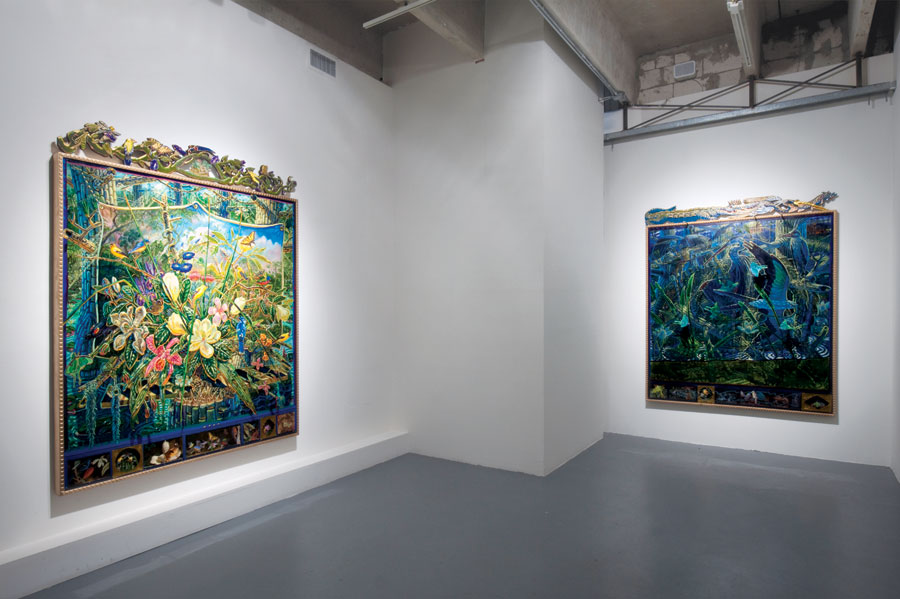
It’s not often that the notion of a Medieval illuminated manuscript leaps off the page into the physical world. Less often does that richly decorated text reach into theatre and scientific observation at the same time. In extravagant, Caribbean-tinged color and painstakingly researched flora and fauna, Mark Messersmith initiates contemplation and foreshadows the sinister possibilities of nature’s steady erosion from human abuses.
Messersmith’s Blighted Eden at Bernice Steinbaum is an exhaustive bio-circus that, literally, turns tragic with miniature “staged” scenes in plexiglass predella boxes at the lower edge of each work. Delicate paper cutouts of finches, reptiles and insects float within; each cell (from left to right) is a subtle narrative of the evolution and destruction of the tangled, Northern Florida wetlands and jungles where Messersmith pools his memories. On the immense canvases themselves (reaching dimensions of six by seven feet), a veritable catalogue of local wildlife teems and slithers rendered in tropical, Technicolor palettes of indigoes, lime-greens and fiery reds. The environments are dramatic: a clash of techniques and historical traces triggering Rosseau’s faraway exotics, Audubon’s razor-sharp illustrations and pre-Renaissance icons embellished with finely carved wood ornaments.
Beyond the feast for the eyes, Messersmith palatably presents the ominous fate of the ethereal “wilderness”; without direct reference to zoning, lumbering or other violent enterprises, he orchestrates a biological opera on a physically and intellectually epic scale. Convenience would pigeonhole Messersmith’s visually dense creations as a brightly-tinted walk in the woods augmented with a dose of LSD. Yet, Messersmith grounds the work with heavy anchors: memento mori encapsulated in those creatures who neither feel nor fear their demise. Each work shows the relentless pace of non-human evolution tainted with glass bottles, street lights, boat engines and obscured city skylines. The full range of wildlife continues its unending course throughout in flight, in hunting, in mating and in birthing. The tragedy of Messersmith’s grand designs, ultimately, is not in the actual imagery. Multiple timelines are possible here. The first, a progression of aesthetic perception from the Christian icon, to the Salon-era historic pictorial, onto the modern flattening of the painted surface and finally into the complex realm of multimedia installation. The second, a chronicle of Nature, itself, falling prey to the detritus of industrial development. The third, an ironic shift for the artist moving from a sanitized, tame St. Louis neighborhood to the swampland of the Panhandle; only to witness its gradual erasure.
The journey into Mark Messersmith’s world requires a calm disposition while traveling through, adaptive thinking to appreciate the madness throughout, and an acceptance that returning to the “real” world is a bit of a sad event in leaving the lush abandon for the concrete jungle outside the gallery.

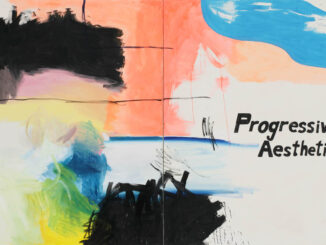
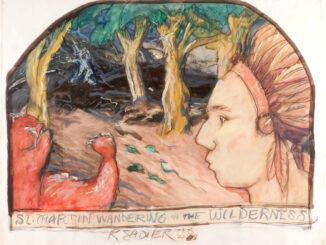
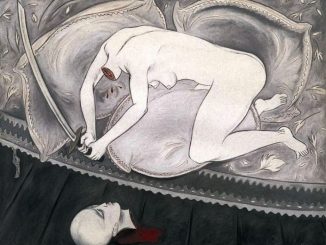
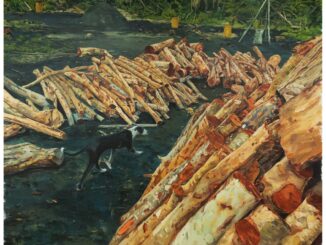

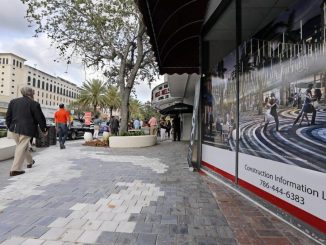
Be the first to comment